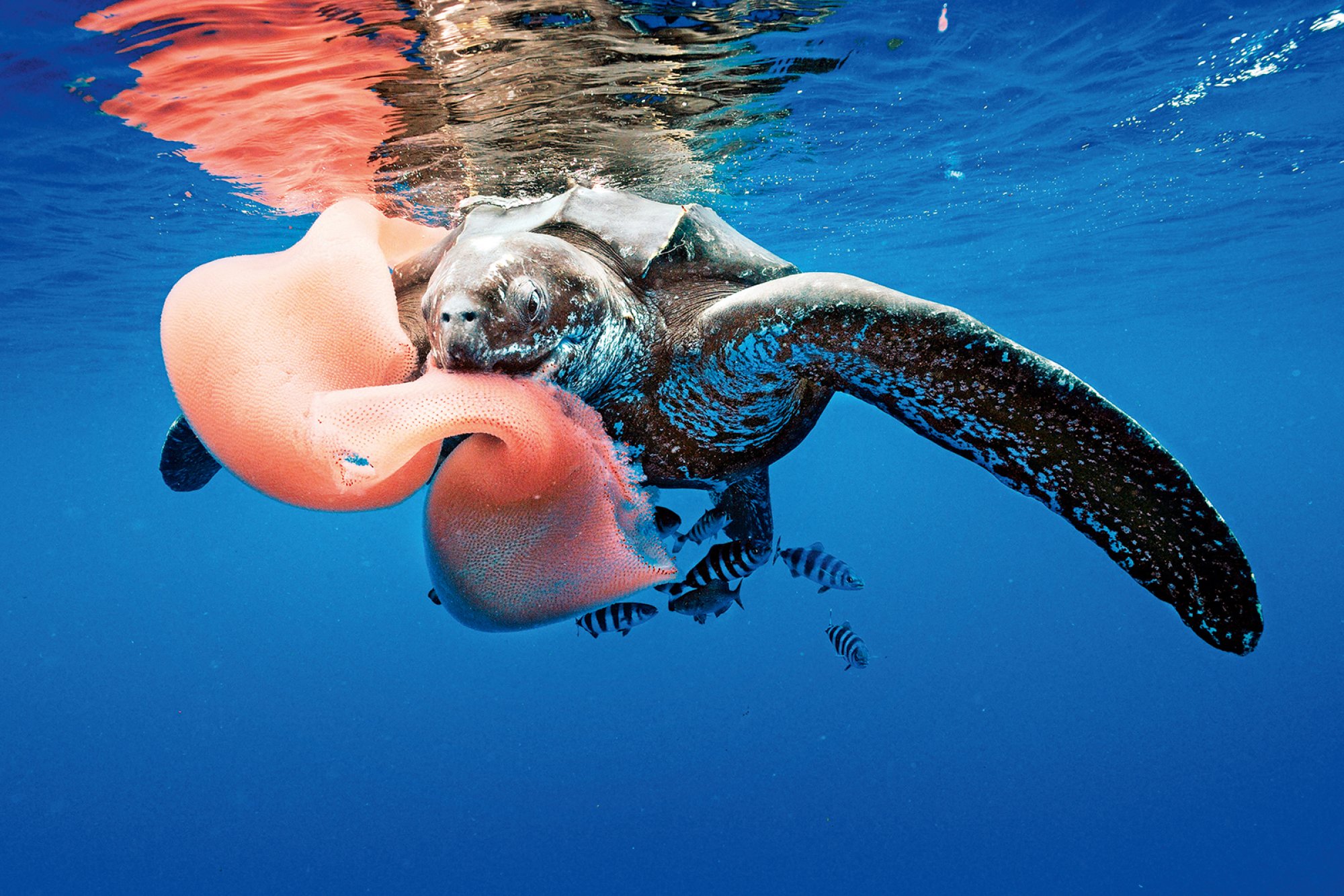Diving with Leatherback Sea Turtles
Deepest Diving, Farthest Swimming, Largest Growing Sea Turtles
The leatherback sea turtle is the largest of all the turtles on earth, both aquatic and terrestrial. It is easily identifiable by its massive, inky-blue leathery shell, different from all of the other sea turtle’s shells which are hard and bony. The leatherback is a massive, ancient relic; the only remaining species of the Dermochelys family of turtles. It can grow up to seven feet long and weigh over 2,000 pounds!
Chances of seeing one of them would be high since it is the most widely distributed of all reptile species; however, due to severe population decline within the last century, they are becoming harder to find, especially in critically endangered subpopulations like the Pacific and Southwest Atlantic. Your best chance to see one up close and personal is to view them during nesting season when these massive animals haul themselves up the beach to dig a nest and lay their eggs. Witnessing this age-old behavior is truly special but be sure to keep a good distance and turn off all lights so as not to disturb them. If you are lucky enough to go diving with leatherback sea turtles bring your camera as this is a once-in-a-lifetime opportunity! Check out the map below for the best locations around the world to encounter them.
Dive Sites with this Animal View more on map

★★★★☆ Marsa Shagra House Reef
Marsa Shagara is a bay with an easy sand bottom entrance that leads to South or North reef dives. The depth starts at 1m and drops to 40m + outside the bay. It is one of the most pristine house reef dives in the south. This dive is great for entry level and experienced divers.

★★★★☆ Liberty Coral Garden
There is a garden of anemones and about 60 statues on the far right side of the dive site. This is a nice second dive in the morning to get away from the crowds at Liberty Wreck. Entry and exit from the beach can be difficult.

★★★★☆ Crystal Bay, Nusa Penida
Located on the west-side of Nusa Penida Island, Crystal Bay has two coral reef formations separated by sand slopes. The combination of slopes and walls that form the topography at this dive site goes down to more than 50 meters and meets with large rock which is an ideal place for a cleaning station for sunfish.

★★★★☆ Elphinstone Reef
This is one of the most famous dive site in Egypt. The Elphinstone Reef is full of healthy corals, magnificent clear blue water, and rich marine life. It is also a great destination to see your first shark.

★★★★★ Halik, Gili Trawangan
A steep slope on the north side of Gili Trawangan, from 5m down to 24m with a series of gullies at the bottom. A series of gradually deeper ridges running parallel to the beach is located between 25m and 40m.

★★★★☆ Elphinstone South
Elphinstone South is an amazing off-shore reef dive and preferred by many as an afternoon dive due to the fantastic lighting. The dive slopes down from 18m deep to the deepest top of the plateau at 40m.
